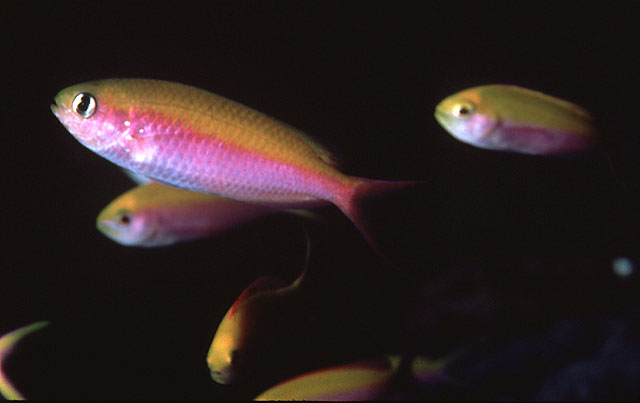| Pomacentridae (Damselfishes), subfamily: Microspathodontinae |
| 10.5 cm TL (male/unsexed) |
|
reef-associated; marine; depth range 1 - 30 m, non-migratory |
| Indo-Pacific: East Africa to the Line, Marquesan and Tuamoto islands, north to the Ryukyu Islands (Ref. 1602), south to New Caledonia (Ref. 37816). |
|
Dorsal spines (total): 12-12; Dorsal soft rays (total): 14-15; Anal spines: 2-2; Anal soft rays: 15-16. Description: Highly variable in color, and able to change quickly, relating to behavior. When feeding on plankton above reefs it is silvery green, and darkens when sheltering on the reefs and shows a banded pattern when guarding eggs in the Maldives (Ref. 48636). Body depth 2.8-3.1 in SL (Ref. 90102). |
| Adults are found in current-swept seaward reefs; occasionally found around lagoon patch reefs. Form aggregations that feed on zooplankton (Ref. 9710). Oviparous, distinct pairing during breeding (Ref. 205). Eggs are demersal and adhere to the substrate (Ref. 205). Males guard and aerate the eggs (Ref. 205). Minimum depth reported taken from Ref. 9710. Diurnal species (Ref. 54980; 113699). |
|
Least Concern (LC); Date assessed: 23 September 2021 Ref. (130435)
|
| harmless |
Source and more info: www.fishbase.org. For personal, classroom, and other internal use only. Not for publication.
